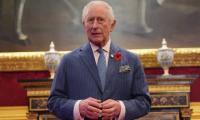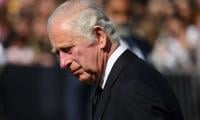On January 28, US President Donald Trump finally unveiled his much-delayed Middle East plan to broker "peace" between Israel and the Palestinian people.
Titled 'Peace to Prosperity: A Vision to Improve the Lives and of the Palestinian and Israeli People', the plan proposes to "unleash the economic potential of the Palestinians" through investment, improved education, healthcare and utilities, and enhanced governance.
The plan also promises large-scale economic projects including a free trade agreement with the United States, a new port in Gaza, a Palestinian Dead Sea resort under Israeli "sovereignty", and others. Compensation is also envisioned for Palestinian refugees who will have to surrender their right of return.
The plan also proposes a broader process of economic normalisation and integration at the regional scale, calling for open borders for capital and investments and the building of new infrastructure to enable trade across the "Palestinian state", Israel, Jordan, Egypt, and Lebanon, with the substantial involvement of Gulf states. One of the great rewards of the plan, its backers argue, is the unprecedented regional economic prosperity that would eventually translate into regional peace and stability.
All of this is supposed to be realised through an investment worth $50bn over 10 years, which will likely be financed by wealthy Gulf states and private companies.
Basically, Trump's plan promises the Israelis an almost full realisation of the Zionist objectives to establish a Jewish state on all of historic Palestine, while offering the Palestinians "prosperous apartheid", ie life under occupation with more money but no dignity and basic rights.
Although backers of the Trump plan like to depict it as a groundbreaking approach to Middle East peace, much of the regional economic integration rhetoric recycles "peace initiatives" proposed by past US administrations.
The Oslo process spearheaded by the Clinton administration in the 1990s, was inspired by the notion of "peace dividends". It promised a new era of prosperity where Gaza would be transformed into the "Singapore of the Middle East"; unsurprisingly, the text of the Trump plan makes multiple references to Singapore as well.
The "Roadmap for Peace" put forward in 2003 by the Bush administration also positioned economic growth and investments at the centre of a future "peace process" - just like Trump's proposal.
President Barack Obama's 2013 "peace" plan offered the Palestinians $4bn to boost the economy by up to 50 percent to help "transform the fortunes of a future Palestinian state" - again the latest plan makes a similar promise.
All of these initiatives have tried to use economic incentives as an instrument for pacification in Palestine, trying to redefine the socioeconomic conditions governing the lives of the Palestinians as a way to ensure political submission.
Excerpted from: 'Trump's Middle East plan may have a silver lining'.
AlJazeera.com















